Echeveria pulvinata (Chenille plant) Profile
Written by Iris
Nov 03 2021
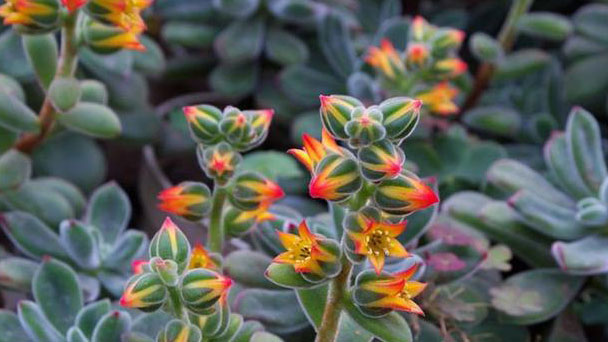
Echeveria pulvinata plant is known as the Chenille plant. Echeveria pulvinata produces flowers that are attractive to hummingbirds. Echeveria Pulvinata doesn't need much water. Chenille plants perform best in containers and are warm plants.
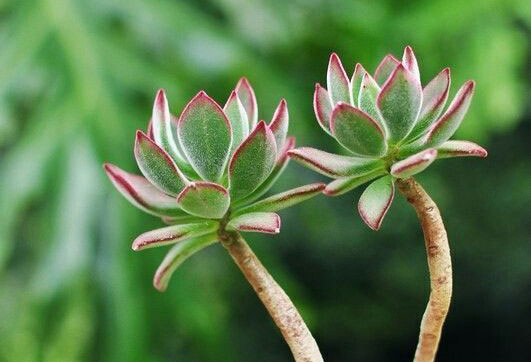
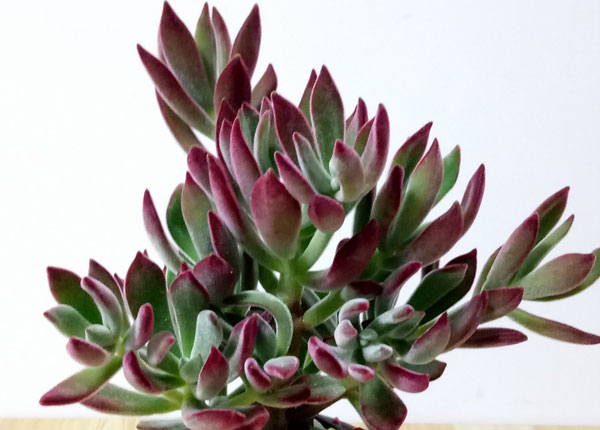
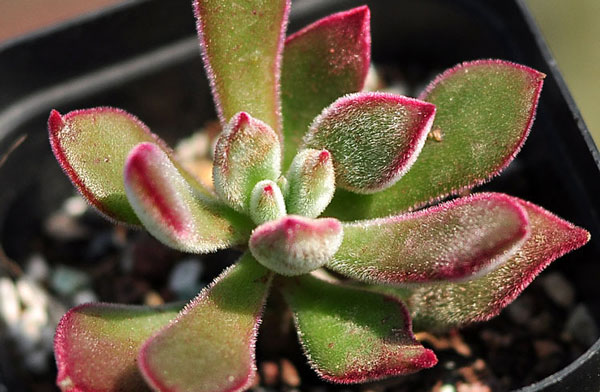
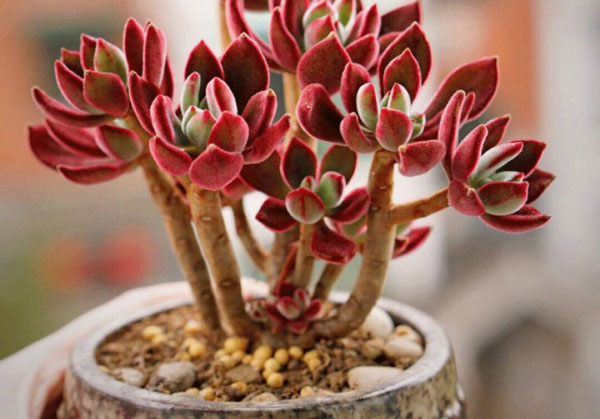
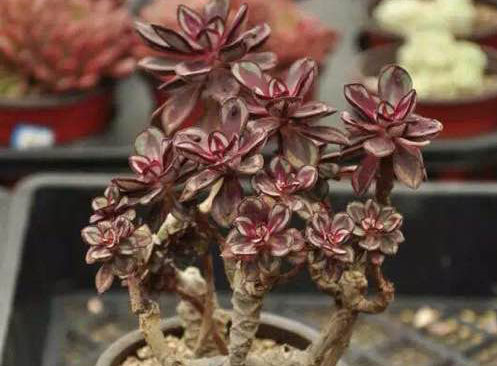
The most common pest is the Mealybug. If they aren’t dealt with quickly, these tiny creatures can cause significant damage to your plant. Mealybugs secrete a waxy substance that coats the leaves, resulting in curling or yellowing leaves from lack of sunlight exposure. In severe cases, this issue could also lead to death if not treated right away.
There are many ways to target these pests.
One is to use a cotton swab dipped in rubbing alcohol and carefully remove the pests with it. You can also purchase natural remedies designed specifically for these types of issues from your local gardening store.
A fungal disease called Echeveria leaf spot will occasionally affect this plant. Still, if you keep up with watering practices, then there won’t be any problems. This fungus usually starts as small brown spots on leaves which quickly grow to become larger, or they might appear as yellowish-brown patches.
The size gets bigger until the entire leaf turns brown and dies off completely unless treated right away with fungicide spray or powder – whichever one works best for your situation. It’s important to note that Echeveria pulvinata plants may be more susceptible to its recurrence once affected by this issue.
It’s recommended that you remove the infected plant parts, stop watering, and expose the leaves to direct sunlight for several hours a day.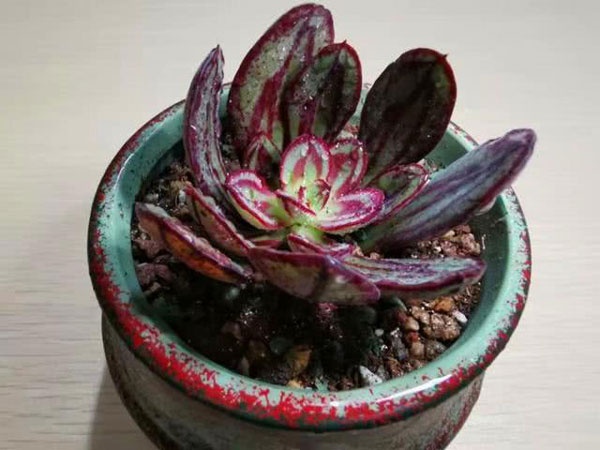
This species makes a good groundcover in areas where it is winter hardy.
In places where Echeveria pulvinata (Chenille plant) Succulent plant is not winter hardy, it makes a good container plant for the porch or patio and can be brought indoors for the winter.
Growing Echeveria pulvinata (Chenille plant) as a succulent hanging basket plant can be very attractive.
Red velvet plants add elegance to the home year around as the indoor plant. (Find more best indoor hanging plants here.)
Read Next:
Echeveria Elegans Mexican Snowballs Care & Growing Guide
Echeveria Laui (Echeveria Succulent) Care Guide
Echeveria Agavoides Care & Propagation
Echeveria Pulvinata (Chenille Plant) Care & Propagation Guide
Echeveria Nodulosa (Painted Echeveria) Care Guide
Echeveria Imbricata (Blue Rose Echeveria) Grow & Care Guide
Echeveria Setosa: Grow & Care for Mexican Firecracker
Echeveria Black Prince Succulent Grow & Care Guide
Echeveria Runyonii Topsy Turvy Grow & Care Guide
Echeveria Takasago No Okina Care Guide
Echeveria Mebina Care Guide
Echeveria pulvinata (Chenille plant) PictureEcheveria pulvinata (Chenille plant) InfoEcheveria pulvinata (Chenille plant) Ecological HabitsEcheveria pulvinata (Chenille plant) DistributionHow to Grow and Care for Echeveria pulvinata (Chenille plant)How to Grow Echeveria pulvinata (Chenille plant)How to Care for Echeveria pulvinata (Chenille plant)Varieties of Echeveria pulvinata (Chenille plant)RubyFrostyEcheveria pulvinata (Chenille plant) Common Pests/DiseasesEcheveria pulvinata (Chenille plant) Design TipsEcheveria pulvinata (Chenille plant) Companion Plants
Echeveria pulvinata (Chenille plant) Picture

Echeveria pulvinata (Chenille plant) Info
| Scientific name | Echeveria Pulvinata |
| Common names | Chenille Plant plush, Ruby Slippers, Plush Plant, Ruby Blush, Red Velvet |
| Color – primary | Green / lime |
| Color – secondary | Red / burgundy |
| Bloom color | Orange bloom |
| Zone | Zone 9a (Minimum 20° F | -6.7° C) |
| Recommended light conditions | Full sun, bright indoor light |
| Maximum height | 9″-12″ |
Echeveria pulvinata (Chenille plant) Ecological Habits
Echeveria pulvinata (Chenille plant), belongs to the Crassulaceae family. The leaves of echeveria pulvinata are spatulate, pointed, and covered with hairs that give it a velvety appearance. The flowers are small, less than 1cm in diameter, orange or red, and emerge from a flower stem approximately 8cm long. With a height of 30cm, it is a perfect plant to have in a pot, either outdoors or inside the home, or in the rockery along with other succulents. This is a small, shrubby and sparsely branched plant, whose discreet bearing allows it to be perfect for growing in a pot. It forms small rosettes of velvety leaves that appear as caked, towards the top of the bush. The leaves are thick, with grayish-green color, with a portion tinted red at the top edges. The flowers are gorgeous and clustered in inflorescences, which are supported by long flower stems. Each flower stem has smaller leaves than the natural leaves of the plant.Echeveria pulvinata (Chenille plant) Distribution
Echeveria pulvinata is a large genus of flowering plants in the family Crassulaceae, native to semi-desert areas of Central America, Mexico and northwestern South America.
How to Grow and Care for Echeveria pulvinata (Chenille plant)
How to Grow Echeveria pulvinata (Chenille plant)
- Propagate with Seeds
- Grow with Cuttings
- Propagte with Leaves

How to Care for Echeveria pulvinata (Chenille plant)
- Light Care
- Soil Care
- Water Care
- Temperature and Humidity Care
- Fertilizer Care
- Pruning Care

Varieties of Echeveria pulvinata (Chenille plant)
Echeveria Pulvinata has several variants that you can choose from, and here are two of the most loved.Ruby
Ruby, which also goes by the names Red Velvet, Ruby Blush or Ruby Slippers. A touch of color may be all that your garden needs, and this stands out succulent offers just that. Normally, plants get their color from flowers which bloom just once a year, though, with this plant, it is the leaves that offer the first dash of color. Like typical Echeveria pulvinate plants, it has fine white hairs covering the leaves. The difference here is that the tips and margins of the leaves have a deep red color, meaning the leaves are both green and red. This succulent is sure to make heads turn.Frosty
Frosty, which is also known as the White Chenille Plant is a brilliant succulent that will thrive anywhere you plant it. The tiny white hairs are quite visible on this plant, giving it a ‘frosty’ look as though it will turn into a different plant if it spends some time in the warmth and defrosts. The leaves of this succulent are all green. Normally, it begins as a small succulent though it can grow into a large plant that reaches 12 cm in height. The blooms for this plant burst out through footlong brown stems, normally towards the very end of the cold season.
Echeveria pulvinata (Chenille plant) Common Pests/Diseases
You should be aware of some pests and diseases when it comes to Echeveria pulvinata plants.The most common pest is the Mealybug. If they aren’t dealt with quickly, these tiny creatures can cause significant damage to your plant. Mealybugs secrete a waxy substance that coats the leaves, resulting in curling or yellowing leaves from lack of sunlight exposure. In severe cases, this issue could also lead to death if not treated right away.
There are many ways to target these pests.
One is to use a cotton swab dipped in rubbing alcohol and carefully remove the pests with it. You can also purchase natural remedies designed specifically for these types of issues from your local gardening store.
A fungal disease called Echeveria leaf spot will occasionally affect this plant. Still, if you keep up with watering practices, then there won’t be any problems. This fungus usually starts as small brown spots on leaves which quickly grow to become larger, or they might appear as yellowish-brown patches.
The size gets bigger until the entire leaf turns brown and dies off completely unless treated right away with fungicide spray or powder – whichever one works best for your situation. It’s important to note that Echeveria pulvinata plants may be more susceptible to its recurrence once affected by this issue.
It’s recommended that you remove the infected plant parts, stop watering, and expose the leaves to direct sunlight for several hours a day.

Echeveria pulvinata (Chenille plant) Design Tips
The Echeveria pulvinata (Chenille plant) succulent plant quickly becomes one of the most common echeverias among those who grow it.This species makes a good groundcover in areas where it is winter hardy.
In places where Echeveria pulvinata (Chenille plant) Succulent plant is not winter hardy, it makes a good container plant for the porch or patio and can be brought indoors for the winter.
Growing Echeveria pulvinata (Chenille plant) as a succulent hanging basket plant can be very attractive.
Red velvet plants add elegance to the home year around as the indoor plant. (Find more best indoor hanging plants here.)
Echeveria pulvinata (Chenille plant) Companion Plants
unknown Echeveria pulvinata crammed between rocks- they seem to like be crammed into tight places; Over the last three years this turquoise plant in the last photo has slowly spread and has made a wonderfully attractive ground cover, but it has not out-competed with the surrounding plants. Echeveria pulvinata make very 'easy' and 'friendly' companion plants, rarely crowding out other plants, but also not caring if they pushed aside a bit. Yarrow, lavender, salvia, and rosemary are great flowering herbs to grow alongside your succulent beds. These herbs take the same conditions as most ground planted succulents.Read Next:
Echeveria Elegans Mexican Snowballs Care & Growing Guide
Echeveria Laui (Echeveria Succulent) Care Guide
Echeveria Agavoides Care & Propagation
Echeveria Pulvinata (Chenille Plant) Care & Propagation Guide
Echeveria Nodulosa (Painted Echeveria) Care Guide
Echeveria Imbricata (Blue Rose Echeveria) Grow & Care Guide
Echeveria Setosa: Grow & Care for Mexican Firecracker
Echeveria Black Prince Succulent Grow & Care Guide
Echeveria Runyonii Topsy Turvy Grow & Care Guide
Echeveria Takasago No Okina Care Guide
Echeveria Mebina Care Guide
Latest Updated
- Benefits of Bugleweed - 7 Science-backed Health Benefits
- Bugleweed Dangers & Side Effects - Is It Poisonous?
- How to Plant Evergreen Trees - What You Should Know
- When to Plant Evergreens - Grow Guide for Evergreen Trees
- 12 Wonderful Evergreen Shrubs for Your Garden
- 12 Popular Evergreen Plants with Pictures for Beginners
- When And How To Prune A Lilac Bush Like a Pro
- How to Grow & Care for Lilac Vine (Hardenbergia Violacea)
- Japanese Lilac Tree (Syringa Reticulata) Care & Propagation Guide
- Shumard Oak Pros and Cons - What to Know
Popular Articles
- Winter maintenance of Antirrhinum Majus
- How to Grow Terminalia Mantaly Tree
- How to Grow and Care for Crossostephium Chinense
- How to grow Antirrhinum Majus in spring
- Peristeria Elata (Dove Orchid) Profile: Info & Care Guide
- Underwatered Snake Plant (Sansevieria Trifasciata) - Signs And How To Fix
- How to Care for Brazilian Jasmine Plant (Mandevilla Sanderi)
- How to Grow & Care for Graptopetalum Purple Delight in Summer
- Rosa Chinensis (China Rose): Plant Growing & Care Tips
- How to Care for Baby Sun Rose (Aptenia Cordifolia)